What Are Steel Doors?
Steel doors are made primarily of steel, a strong and durable metal alloy composed mainly of iron and carbon. They are widely used in residential, commercial, and industrial settings for their advantages: strength, durability, security, and energy efficiency.
Steel doors can be customized with various finishes, such as powder coating, to resist corrosion and enhance their aesthetic appeal. Additionally, they can be fitted with different types of hardware, glazing, and accessories to match specific requirements or design preferences.
What are the types of steel doors?
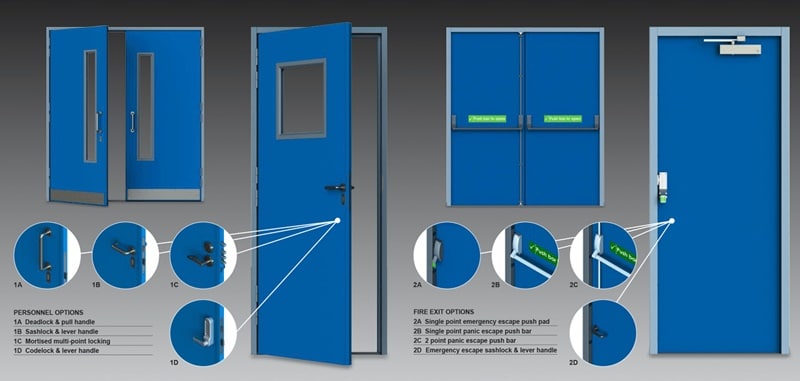
Steel doors come in various types to suit different needs and applications. Here are some of the most common types:
- Hollow Metal Doors: These are commonly used in commercial settings due to their durability and security. They are made from steel sheets bent to create a hollow shell, often filled with an insulating material.
- Fire-Rated Steel Doors: These doors are designed to withstand fire for a specified period, typically 20 minutes to 3 hours. They are used in commercial buildings, apartment buildings, and other settings where fire safety is a concern.
- Steel Security Doors: These doors are designed specifically for security purposes. They are typically thicker and stronger than standard steel doors and may include additional security features like multi-point locking systems.
- Steel Entry Doors: These are residential doors that are designed to provide a high level of security and durability. They often have a foam core for insulation and can be finished to look like wood or other materials.
- Stainless Steel Doors: These doors are made from stainless steel, which is resistant to corrosion and staining. They are often used in settings where hygiene is a concern, such as hospitals and food processing plants.
- Steel Garage Doors: These doors are designed for use in garages. They are typically sectional doors that roll up and down but can also be single-panel tilt-up doors.
- Steel Sliding Doors: These doors slide horizontally on a track. They are often used for large openings, such as warehouse or airplane hangar doors.
- Steel French Doors: These are double doors that often include glass panels. They are typically used as exterior doors in residential settings.
Each steel door type has its advantages and is suited to different applications. The best type for you will depend on your specific needs and the requirements of your building.
Steel door material
Steel doors are typically made from sheets of steel formed into a door shape. The thickness of the steel can vary, but it’s usually between 20 and 18 gauge for residential doors and can be even thicker for commercial or industrial doors.
The steel sheets are often bent to create a hollow shell, which can then be filled with an insulating material. This insulation can be a type of foam, such as polyurethane or polystyrene, which helps improve the door’s energy efficiency by reducing heat transfer.
In addition to steel and insulation, other materials may also be used to construct a steel door. For example, the door may have a wood frame to help it fit into a standard door opening. The door may also include glass panels, which can be single, double, or triple-glazed.
The surface of the steel door can be finished in various ways. It can be painted, powder-coated, or finished to look like wood. Some steel doors also have a vinyl or fiberglass coating for added durability and resistance to rust.
In summary, while the primary material in a steel door is steel, other materials like insulation, wood, glass, and various finishes are also used to enhance the door’s performance and appearance.
Are steel doors good?
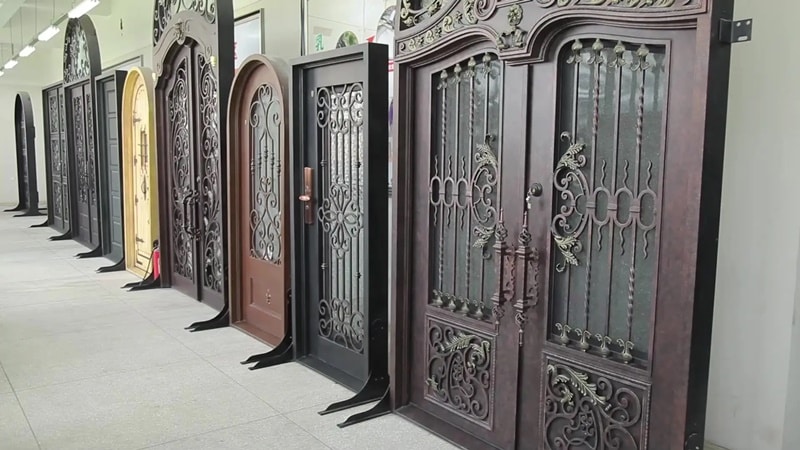
Yes, steel doors have several advantages that make them a good choice for many applications:
- Security: Steel doors are incredibly strong and can provide high security. They are difficult to break down or breach, which can deter potential intruders.
- Durability: Steel doors are resistant to warping, cracking, and chipping. They can withstand harsh weather conditions and are not easily damaged by heavy use.
- Energy Efficiency: Many steel doors have an insulating foam core, which can help keep your home warm in the winter and cool in the summer. This can help reduce your energy costs.
- Maintenance: Steel doors require very little maintenance. They are easy to clean and do not need to be painted as often as wood doors.
- Cost-Effective: While the initial cost of a steel door can be higher than a wood or fiberglass door, the long-term costs can be lower due to their durability and low maintenance needs.
However, there are also a few disadvantages of steel doors:
- Aesthetics: While steel doors can be painted or finished to look like other materials, they may not have the same natural beauty or texture as wood doors.
- Dents and Scratches: Steel doors can be susceptible to dents and scratches, which can be difficult to repair. However, higher-quality steel doors are often more resistant to this damage.
- Corrosion: Steel doors may be rust-prone if not properly maintained in areas with high humidity or salt air.
- Heat Conduction: Steel doors can become hot to the touch in direct sunlight and cold in winter. However, this can be mitigated with proper insulation.
In conclusion, whether a steel door is a good choice depends on your needs and circumstances. It’s always a good idea to weigh the pros and cons and consider your personal preferences and the specific requirements of your home or building.
Where to buy steel doors?
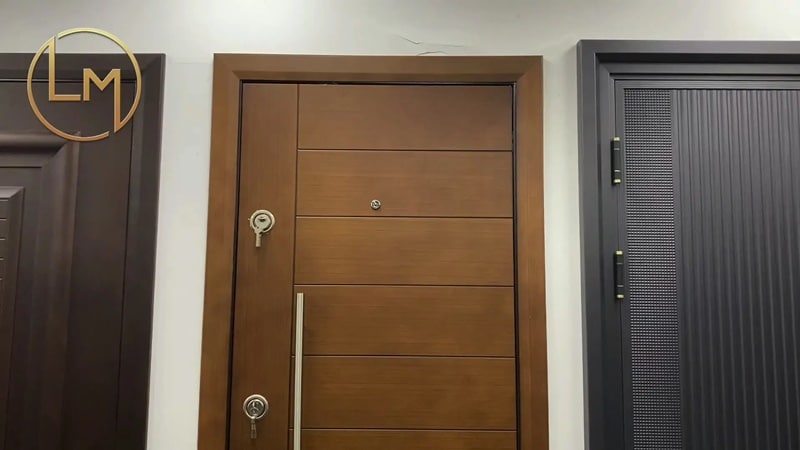
You can purchase steel doors in several places, both online and offline. Here are some options to consider:
- Local door and window dealers: Check with door and window retailers in your area, as they often carry a selection of steel doors. They can also provide installation services and help you select the right door.
- Home improvement stores: Large home improvements stores, such as Home Depot, Lowe’s, or Menards, typically offer a range of steel doors for residential and commercial applications.
- Specialty door manufacturers: Some companies specialize in manufacturing and selling steel doors. You can find these companies online or through local directories and inquire about their products and services.
- Online retailers: Websites like Amazon, Wayfair, or Build.com may carry steel doors from various brands and manufacturers. While purchasing online can be convenient, keep in mind that shipping costs for heavy items like steel doors can be high, and you may need to arrange installation separately.
- Custom door manufacturers: If you require a custom steel door, you can search for manufacturers specializing in creating made-to-order doors. They can help you design a door tailored to your requirements and preferences.
Before making a purchase, it is essential to research the various options, compare prices, read reviews, and ensure that the door meets your security, insulation, fire rating, and aesthetics requirements. Additionally, consider the warranty and after-sales support the manufacturer or retailer provides.
What is the best paint for steel doors?
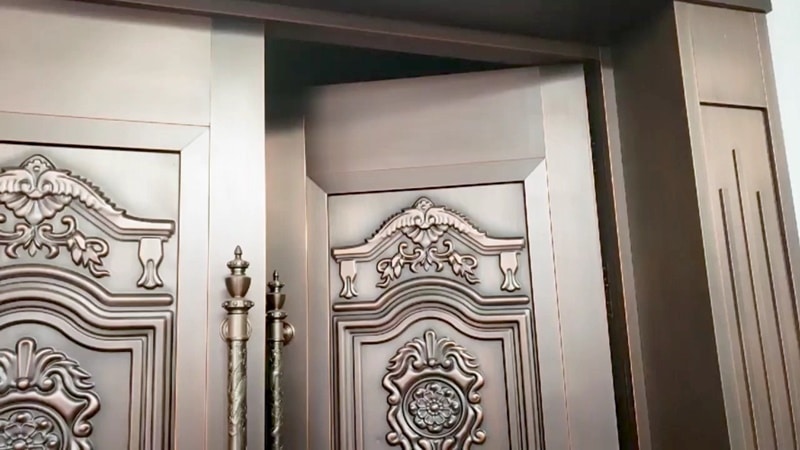
The best paint for steel doors is typically a high-quality acrylic latex paint or a direct-to-metal (DTM) paint specifically designed for metal surfaces. These paints adhere well to metal, are durable, and provide a smooth finish. Here are some steps to help you choose and apply the best paint for your steel door:
- Choose a high-quality paint: Select a paint specifically formulated for metal surfaces, such as acrylic latex or direct-to-metal (DTM) paint. These paints provide good adhesion, durability, and resistance to weather, rust, and fading.
- Prepare the surface: Proper surface preparation is crucial for achieving a long-lasting, smooth paint finish. Remove loose paint, rust, or dirt from the door using a wire brush or sandpaper. Clean the surface with a mild detergent and water, then rinse and let it dry completely.
- Prime the door: If the door is not pre-primed or if you’re changing the color significantly, apply a high-quality metal primer to ensure proper adhesion of the paint and prevent rust. Follow the manufacturer’s instructions for the recommended drying time.
- Apply the paint: Use a high-quality paintbrush, roller, or sprayer to apply thin, even coats of paint, allowing each coat to dry according to the manufacturer’s instructions before applying the next coat. Two or three coats are usually recommended for optimal coverage and durability.
- Seal the paint: For added protection and longevity, you may consider applying a clear sealer after fully drying. This step is optional but can help protect the paint from chipping, fading, or weather damage.
Following the paint and primer manufacturer’s instructions and using appropriate safety gear, such as gloves, masks, and goggles, is essential when painting a steel door. Also, ensure adequate ventilation and avoid painting in extreme temperatures or humidity, as these conditions can affect the drying and curing of the paint.
Which type of door lock is best for Steel Doors?
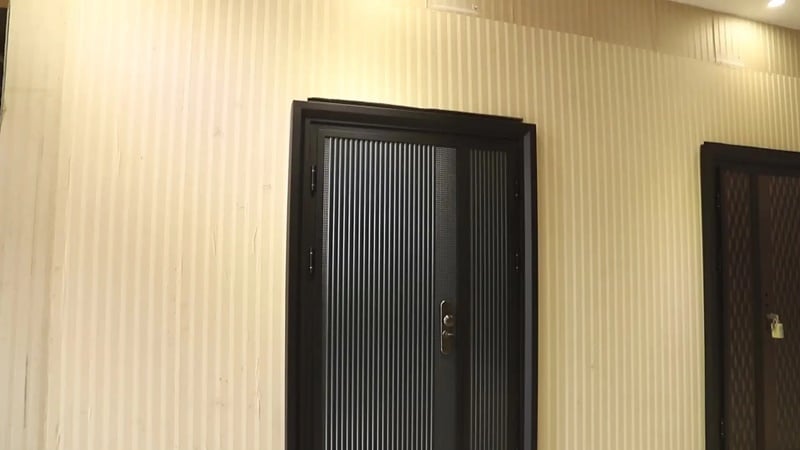
The best type of door lock for steel doors typically depends on the desired level of security, the door’s specific application, and your budget. Here are some common types of door locks suitable for steel doors:
- Deadbolt locks: Deadbolt locks offer a high level of security and are among the most popular choices for steel doors. They come in single-cylinder and double-cylinder options, with single-cylinder deadbolts being more common for residential use. Deadbolts can be paired with a separate doorknob or lever handle.
- Mortise locks: Mortise locks are known for their durability and security. They are often used in commercial settings or high-security residential applications. These locks are installed within a cavity cut into the door and usually include a deadbolt and a latch bolt.
- Keyless entry locks: Keyless entry locks, such as electronic keypads or smart locks, provide added convenience and security features. Depending on the specific model, they allow you to unlock your door using a code, an access card, a fingerprint, or a smartphone app. Some smart locks can also integrate with home automation systems for additional functionality.
- Multi-point locking systems offer increased security by engaging multiple locking points along the door’s edge when the key is turned,d or the handle is lifted. They are common in steel security doors and can provide enhanced protection against forced entry.
When choosing the best door lock for your steel door, consider the desired level of security, ease of use, aesthetics, and budget. It’s also essential to ensure the lock is compatible with your specific door in dimensions, thickness, and backset. It’s recommended to consult with a professional locksmith or door installer for guidance on selecting and installing the right lock for your steel door.


